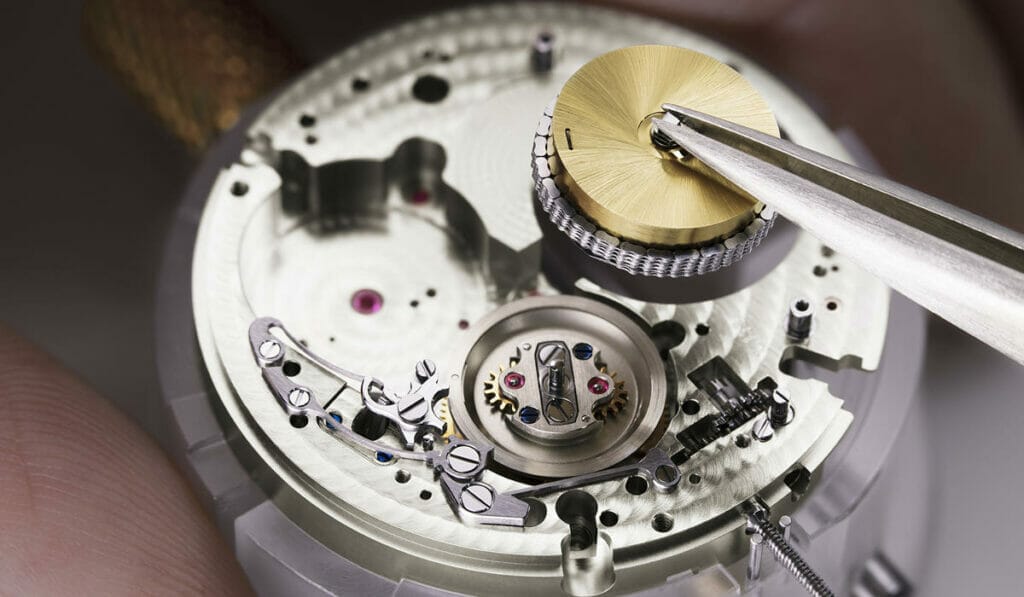A couple of months ago, as I walked into the House of Lange Exhibition held in the National Museum of Singapore, I found myself thinking how a museum felt like a perfectly natural place to exhibit watches of A Lange & Söhne’s calibre.

The brand has a vast history that dates back to the early 19th century with an incredible sequence of events which transcend World War II and the German reunification before it became the Lange we know today. There is genuine innovation in micro mechanics within the movement of the watches, something that should be documented and cemented in time. And last but not least, to some, watches are just as emotionally moving as a timeless work of art. So why not host an exhibition of watches in a museum?
The House of Lange exhibition I attended was the second one held in Singapore, with the first one occurring 12 years ago. The exhibition was designed to tell a story of the brand’s Saxon legacy, impress attendees with immense watchmaking innovations, and of course excite the collectors with rare and exclusive timepieces.
To achieve this, six private collectors contributed watches from their personal collection to be displayed. There was the A Lange & Söhne “165 Years – Homage to F. A. Lange Collectionâ€, a set of three timepieces – The Tourbograph, Pour Le Merite’, Lange 1 Tourbillon and 1815 Moonphase, all presented in the exclusive honey gold case; the “Datograph Pisaâ€, which had only 10 pieces made for Milanese retailer Pisa Orologeria in 2004 and is the only limited edition Datograph to date; and the Cabaret “Lange Owners Group†Edition, a special edition produced for the group in 2009, limited to only 25 pieces.
However, for me, the highlight of the exhibition was the Connoisseurs’ Akademie, a mini watchmaking workshop where we were allowed to get hands-on with assembling a watch. Of course, we went nowhere near a Lange movement but instead were provided with a simple movement, not unlike those used for beginners at a watchmaking school. The goal was to assemble just the energy transmission portion of the movement. This meant connecting the barrel to the escape wheel through a series of gears and pinions.

After watching countless professional watchmakers do this, I was convinced it would be relatively simple. After all, we were given stepby- step instructions, and the pieces within a movement fit together like a puzzle don’t they? I couldn’t be more wrong. Never mind the tiny scale of these little pinions and gears which made it incredibly hard to see, but because of their size, these components were incredibly fragile as well. Everything had to be viewed through a loupe and more amazingly, when it came time to lubricate the jewels, a microscope was needed to ascertain if there was just the right amount of oil on a special tool.
Of course the professionals made all of this look easy but for me, there was definitely a lot of sweating, and a lot of swearing involved. And as if that wasn’t difficult enough, our instructor, Robert Hoffmann, Head of the Zeitwerk department from the manufactory proceeded to remind us that this was just a simple movement for watchmaking students and what they work with at Lange was exponentially more complicated.
Then there was the saying that every Lange is assembled twice. The first time is to test all the components together and then it is disassembled, each part finished with decorative techniques and re-assembled again. If the pressure was already looming the first time, I just can’t imagine what it would be like on the second assembly where one wrong move with the very sharp tweezers can render a part useless thus destroying hours and sometimes days of work. And to think all the watchmakers I’ve seen went about their tasks with such stoic faces; they must be made of different stuff.
While I sat there fully contemplating the amount of work that goes into each A Lange & Söhne watch, I suddenly made the connection with yet another energy transmission system – the fuséeand- chain, a signature of Lange’s hallmark, “Pour le Mériteâ€. In order to achieve a constant force as the mainspring unwinds, this fuséeand- chain transmission works like an infinitely variable gearbox. The technique is not something entirely new as it was mainly used in marine chronometers but what Lange did was to shrink down this system to fit into a wristwatch.
Just to give you an idea of how technically challenging this was, the chain that is attached to the fusée consists of 636 individual parts and has a cross-section measuring 0.6 by 0.3mm. I can’t even begin to imagine the amount of patience required to put something like this together. As Anthony de Haas, Director of Product Development at A Lange & Söhne puts it: “Even if each of the 684 parts is manufactured strictly within the micrometre tolerance range, the watchmaker still has to perform many minute adjustments to ensure that all the mechanisms work together perfectly as envisaged by the calibre engineers. On the part of the watchmakers, this calls for the utmost of technical comprehension, experience-based knowledge, manual virtuosity and virtually infinite patience.â€



